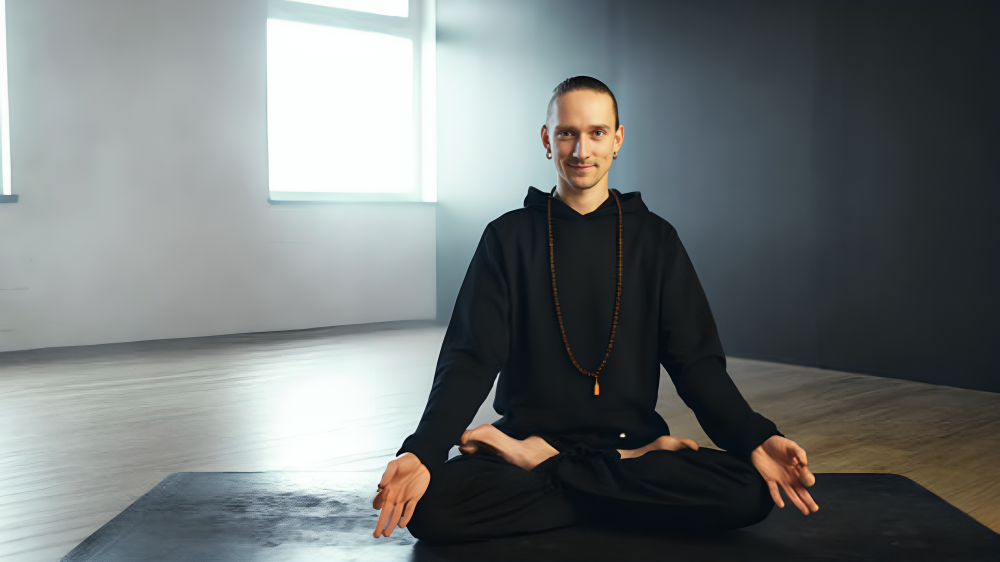
What is Kapalbhati Pranayama?
Kapalbhati Pranayama is one of the most dynamic breathing exercises in yoga. Originating from the ancient practices of Hatha Yoga, the name “Kapalbhati” is derived from two Sanskrit words: “Kapal,” meaning “skull,” and “Bhati,” meaning “shining” or “illuminating.” Essentially, Kapalbhati is designed to cleanse the frontal brain, making it more vibrant and focused.
How to Perform Kapalbhati Pranayama: Step-by-Step Guide
Preparation
Sit Comfortably: Sit in a meditative posture like Sukhasana (Easy Pose) or Padmasana (Lotus Pose). If sitting on the floor is uncomfortable, you can sit on a chair with your feet flat on the ground.
Spine Alignment: Keep your spine straight, shoulders relaxed, and head slightly tilted forward.
Place Your Hands: Rest your hands on your knees with palms facing upward, forming a chin or jnana mudra (thumb and index finger touching).
Begin the Breathing Technique
Inhale Deeply: Take a deep breath in, filling your lungs completely.
Exhale Sharply: Contract your abdominal muscles and forcefully exhale through your nose. Your focus should be on exhalation.
Passive Inhalation: Allow the inhalation to happen naturally and passively, without any effort. It’s important that your inhalation is reflexive rather than active.
Continue the Rhythm: Start with 20 repetitions (one exhalation and one inhalation is one cycle) and gradually increase as you become more comfortable.
Duration and Practice
Beginners: Start with 1-2 minutes, practicing about 3 rounds, and gradually increase the duration over time.
Advanced: Once accustomed, you can aim for 5-10 minutes of continuous practice.
Post-Practice
Rest and Relax: After completing Kapalbhati, sit quietly and observe the sensations in your body. You might feel a sense of lightness, clarity, and heightened energy.
Cool Down: Follow Kapalbhati with a few minutes of deep, slow breathing to calm your system.
Benefits of Kapalbhati Pranayama
Detoxification of the Body
By forcefully exhaling, you expel carbon dioxide and toxins from your body, purifying your respiratory system. This detoxification process boosts overall health.
Improves Digestive Function
The rapid abdominal movements stimulate the digestive organs, enhancing metabolism and helping to alleviate issues like constipation and indigestion.
Aids in Weight Loss
Regular practice of Kapalbhati can help burn calories and reduce abdominal fat, contributing to weight loss and a toned midsection.
Enhances Lung Capacity
The vigorous breathing technique improves lung capacity, making it an excellent practice for those who suffer from respiratory issues like asthma or bronchitis.
Mental Clarity and Focus
Kapalbhati clears the mind, improves concentration, and sharpens memory, making it a valuable tool for mental health and cognitive function.
Balances the Nervous System
This pranayama calms the nervous system, reducing stress and anxiety, while simultaneously energizing the body and mind.
Boosts Circulation
The forceful exhalation increases blood circulation, ensuring that oxygen and nutrients reach every cell, thus improving overall vitality.
Stimulates the Brain
Kapalbhati is believed to activate the frontal lobe of the brain, which is responsible for logical thinking, problem-solving, and emotional control.
It’s here Bhastrika Pranayama How to Do it and what are the benefits
FAQs
Q: How often should I practice Kapalbhati?
A: For beginners, 3-5 minutes daily is sufficient. As you become more comfortable, you can extend the practice to 10-15 minutes.
Q: Can I do Kapalbhati on an empty stomach?
A: Yes, it’s best to practice Kapalbhati on an empty stomach, preferably early in the morning.
Q: Is Kapalbhati safe for everyone?
A: While Kapalbhati is safe for most people, those with certain medical conditions should practice under supervision or avoid it altogether.

